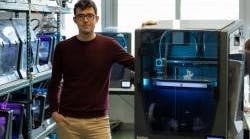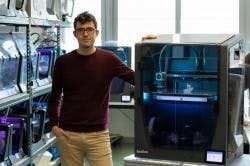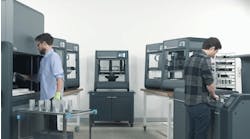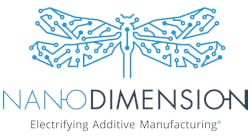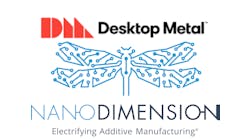Big & building...a status check on 3D printing
3D printing is changing. Quickly. Perhaps more than any other facet of digital transformation, 3D printing
BCN3D's Eric Pallarés
(or additive manufacturing) is snowballing in adoption and, along the way, morphing in the ways it is being used and the solutions it is providing early adopters.
Here we connect with Eric Pallarés, CTO of Barcelona-based 3D-printer manufacturer BCN3D, to get an update on trends in the space, boosted accuracy with the tools, and the verticals leading the way. Take a look...
Smart Industry: What is the next trend in 3D printing?
Eric: In the desktop/workbench segment the next trend (actually, it is already THE trend) is productivity. While Fused FIlament Fabrication and Fused Deposition Modeling
were perceived a couple of years ago as just prototyping technologies, more and more customers are seeing them as an alternative to produce short/medium series of end-use parts with technical materials. We have seen a great example during the COVID-19 crisis. Many users turned their "prototyping" 3D printers into small production centers. As the printers get more accurate, repeatable and easy to manage within a team, the trend will keep us growing.
Smart Industry: How are manufacturers taking advantage of new capabilities with 3D printing? What challenges still remain regarding recognizing / adopting additive manufacturing?
Eric: Manufacturers do appreciate the low investment they need to put into professional desktop/workbench equipment and the quick ROI they get. 3D printing generally exceeds initial expectations from users; they are capable of adapting their workflows with little effort to use additive manufacturing (AM) in different processes/production parts. Of course, it's a long journey and AM will never totally replace traditional manufacturing technologies, but it will complement them.
In general, manufacturers see 3D printing as a way to iterate faster, with little investment (no jigs or tooling is required). Quick innovation drives to higher competitiveness, flexibility and adaptability.
However, it is important for us as AM-solutions suppliers, to focus our efforts on the reliability and repeatability of the process in order to get consistent parts over time, independently of external factors. On the other hand, we still need to work on the productivity. Spending several hours to get a single part is something most manufacturing companies don't like—they are used to quicker speeds. Because of this, it can be difficult to be paired with traditional manufacturing technologies, so it is definitely something to work on.
Smart Industry: What industry verticals are leading the way with 3D printing?
Eric: High added values like automotive, aerospace or healthcare traditionally led the adoption of AM. Automotive because they are constantly looking for efficiency, to cut down costs, etc. Aerospace is not that sensitive to cost, but they do need optimization, weight reduction, and very short series of parts that are not suitable to manufacture with traditional technologies. And healthcare, since they look for unique parts with customization. These characteristics are the strengths of 3D printing.
On the other hand, verticals such as engineering or product design, in general, are adopting AM strongly, as well as education. For them it is a great way to innovate faster, to iterate designs, to save costs and to teach and prove complex concepts.
Smart Industry: What most excites you in the coming years with additive manufacturing?
Eric: In the last five years we have seen great progress in the 3D-printing industry. The desktop solutions have professionalized and now there is a wide range of solutions at any price level. However, the industrial solutions are still not affordable. I'm excited about a near future where virtually any company, even small ones, can access a reliable and powerful manufacturing ecosystem at their facilities. We will see an increased effort on software, materials and hardware integration, as well as on the reliability and repeatability of the printing process.
